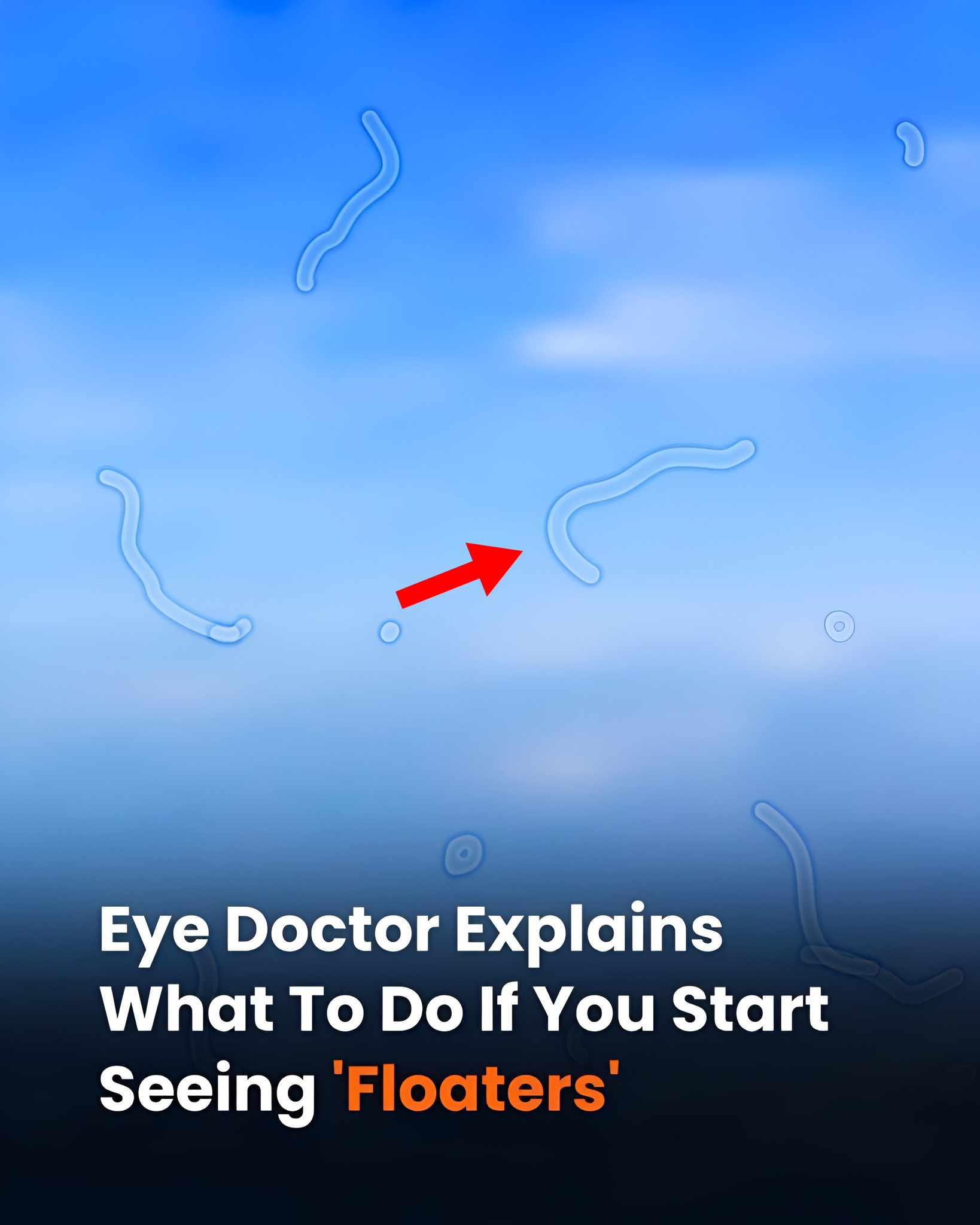What Are Eye Floaters?
Eye floaters are small clumps of cells, collagen fibers, or other substances that form inside the vitreous — the clear, jelly-like substance that fills the center of your eye. As you move your eyes, these particles float within the vitreous, casting tiny shadows on your retina. These shadows are what you perceive as floaters.
While floaters are very common, especially as we age, they are usually not a major cause for concern unless they appear suddenly or are accompanied by other symptoms.
Common Causes of Eye Floaters
Floaters can result from a variety of natural processes and conditions. Here are some of the most frequent causes:
1. Aging
-
As you grow older, the vitreous gel inside your eye begins to liquefy and shrink.
-
This process, known as vitreous syneresis, causes collagen fibers to clump together and cast shadows on your retina.
-
Age-related floaters are the most common and generally harmless.
2. Nearsightedness (Myopia)
-
People who are nearsighted have longer eyeballs, which can stretch the vitreous and make it more likely to develop floaters.
-
Myopic eyes are also more prone to retinal tears, making floaters an important symptom to monitor in these individuals.
3. Diabetes
-
Individuals with diabetes, particularly those with diabetic retinopathy, are at a higher risk of experiencing floaters.
-
In diabetic retinopathy, abnormal blood vessels may leak into the vitreous, causing sudden floaters.
4. Post-Cataract Surgery
-
After cataract surgery, some people experience an increase in floaters.
-
Surgery can sometimes accelerate changes in the vitreous or cause vitreous detachment.
Warning Signs: When to See a Doctor
Although floaters are often harmless, certain changes could indicate a serious problem. You should seek immediate medical attention if you notice any of the following:
1. Sudden Increase in Floaters
-
A rapid rise in the number or size of floaters could signal a vitreous detachment or even a retinal tear.
2. Flashes of Light
-
Seeing flashes or streaks of light (called photopsia) can mean that the vitreous is tugging on the retina.
-
This is often a warning sign of a retinal tear or detachment, both of which are emergencies.
3. A Dark Shadow or Curtain Over Part of Your Vision
-
If it seems like a curtain or shadow is creeping over your field of vision, it could be a symptom of retinal detachment.
-
Without prompt treatment, retinal detachment can lead to permanent vision loss.
Important:
-
Retinal tears and detachments are urgent eye emergencies. If you experience these symptoms, call your ophthalmologist immediately or go to an emergency room specializing in eye care.
Treatment Options for Floaters
In most cases, floaters do not require any treatment. Your brain often learns to ignore them over time, making them less noticeable. However, if floaters significantly impair your vision or are caused by a more serious condition, intervention may be needed.
1. No Treatment Necessary (Most Common)
-
For the majority of people, floaters are a mild nuisance at worst.
-
Over time, they may settle out of your line of sight or your brain will “tune them out.”
2. Vitrectomy
-
What it is: A surgical procedure where a doctor removes the vitreous gel (and floaters) from the eye and replaces it with a saline solution.
-
Risks: Infection, retinal detachment, cataracts, and bleeding.
-
Usage: Generally reserved for severe cases where vision is significantly impacted.
3. Laser Therapy (Laser Vitreolysis)
-
What it is: A special laser is used to break up larger floaters, making them less noticeable.
-
Risks: Not all floaters can be safely targeted; risk of retinal damage exists.
-
Usage: Rarely performed and only by highly specialized doctors.
Note: Both vitrectomy and laser therapy carry risks and are typically considered only when floaters severely interfere with daily life.
Tips to Manage and Minimize Floaters
If your floaters are benign but bothersome, there are simple strategies to manage them:
1. Move Your Eyes
-
Shifting your gaze up and down or side to side can move floaters out of your central line of sight.
-
Rapid eye movement can sometimes cause the floaters to settle out of view temporarily.
2. Maintain an Eye-Healthy Diet
-
Include foods rich in omega-3 fatty acids, vitamin A, vitamin C, vitamin E, zinc, and lutein.
-
Foods to include:
-
Salmon, sardines, and other fatty fish
-
Leafy greens like spinach and kale
-
Carrots, sweet potatoes, and bell peppers
-
Nuts and seeds
-
Citrus fruits
-
3. Stay Hydrated
-
Drinking enough water helps maintain the health of your vitreous and overall eye moisture.
4. Avoid Smoking
-
Smoking is linked to numerous eye problems, including an increased risk for cataracts and retinal diseases.
-
Quitting smoking can help preserve your eye health over the long term.
5. Get Regular Eye Check-Ups
-
See an optometrist or ophthalmologist annually, or more often if you have risk factors like diabetes or myopia.
-
Regular exams can help detect early changes in eye health and prevent serious conditions.
Floaters are usually a normal part of aging and, in most cases, are harmless. However, sudden changes in the number or type of floaters—especially when accompanied by flashes of light or shadows in your vision—can signal a more serious issue like a retinal tear or detachment. These emergencies require immediate medical attention.
Practicing good eye health habits, maintaining a nutritious diet, and staying alert to changes in your vision are essential steps for managing floaters. Remember, your eyes are incredibly precious—regular care and quick action when needed can help preserve your vision for years to come.

